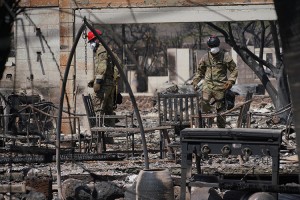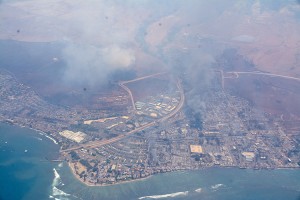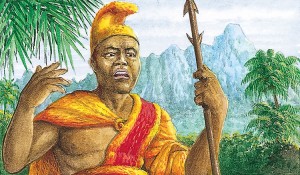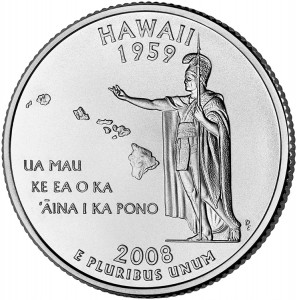Maui: The Deadliest U.S. Wildfire in a Century
Tuesday, August 15th, 2023Wildfires, driven by strong winds and fueled by dry conditions, caused great destruction and loss of life on the Hawaiian island of Maui. With strong winds stemming from a distant hurricane and warmer temperatures on the island due to climate change, the wildfires caught and spread rapidly. Three wildfires started in Maui on Tuesday, August 8th, 2023. The Upcountry Wildfire fire began in central Maui minutes after midnight. The fires in Lahaina and Pulehu started later on in the morning. The catastrophic fires took many by surprise as the island was unprepared for the severity of the wildfires.
President Joe Biden issued a federal disaster declaration following the devastation on Thursday, August 10th. Some wildfires started on the Big Island and Oahu but were quickly contained. The Army, Coast Guard, Federal Emergency Management Agency (FEMA), and National Guard began efforts to extinguish fires and rescue and aid survivors. As firefighters worked to contain the blaze, the death toll climbed to 99 on Monday, August 15th. Many officials warn the number could increase as search and rescue efforts continue throughout the island.

Soldiers in the Hawaii National Guard assist in search and rescue efforts after the Maui wildfires in Lahaina on Aug. 10, 2023.
Credit: Andrew Jackson, US National Guard
Fires destroyed much of the historic town of Lahaina, killing dozens of people and forcing thousands to evacuate. Lahaina, a town with 13,000 residents on northwestern Maui, was hit the hardest. Officials report more than 2,200 buildings were burned to ash and molten metal, including many residential buildings. Fatalities in Lahaina account for most of the death toll from the three fires.
The wildfires have killed more people than the 1960 tsunami that killed 61 on the Big Island. The Laihana wildfire has become the deadliest wildfire on American soil since 1918. In 1918, sparks from a railroad in dry conditions set off a wildfire in Cloquet, Minnesota, killing an estimated 453 people. The deadliest fire in United States history occurred in 1871 in Peshtigo, Wisconsin, killing 1,152 people.
Two days before the wildfires began, the National Weather Service in Honolulu announced a fire weather watch due to strong winds and low humidity. However, officials underestimated how fast the fires could spread on a tropical island known for rain forests. Warnings continued on Monday, announcing “critical fire weather conditions.” Hawaii boasts the world’s most extensive emergency alarm system, with 400 outdoor sirens throughout the state territory. Maui has 80 of those sirens. However, the island’s emergency alert systems failed when the fires began. Not one siren blared. On Tuesday, the county officials sent alerts through cell phones, radios, and television. However, many residents had already lost electricity and cell service. Many survivors said they never received an official warning or order to evacuate the area. Some residents only realized there were fires when their home smoke alarm sounded.
The fire spread so quickly that many did not have time to grab essential supplies before leaving their homes. Many people evacuating by car or bicycle were forced to run into the ocean as fires caught up to them. Residents fled through thick smoke and gusts of wind with burning embers swirling around them. Hawaii Governor Josh Green explained the strong winds, reaching up to 80 miles (128 kilometers) per hour, kept first responders from using helicopters to extinguish fires and look for survivors.
As search and rescue efforts continue, the death toll could rise. Many homes burned down have not been checked for survivors or deceased residents. Survivors have been unable to reach family members and friends due to the loss of cell service throughout the island. People are using public radio stations, social media, and county websites to post where survivors are taking shelter.
Experts believe the wildfire was initially started by a power line that fell due to high winds in the area. Many residents are wondering how the fire spread so rapidly. One theory is the presence of nonnative grasses on the island. Farmers planted grasses for livestock. The last sugar cane plantation shut down in Maui in 2016, allowing nonnative grasses to spread unchecked.
On Sunday, August 13th, the Lahaina fire was 85 percent contained. FEMA announced the cost to rebuild after the Lahaina fire would be close to 5.52 billion dollars. With more than 2,100 acres (850 hectares) burned and 2,200 structures damaged or destroyed, many families and businesses will be starting over.
Even if their homes were untouched and standing, many households remain without power. The Maui County authorities advised that residents should not drink tap water. Many people could not find gasoline or clean water through the weekend. As many as 4,500 people are seeking shelter and supplies on Maui. While the search continues, charities and volunteers send survivors bottled water, food, medicine, and other supplies.






